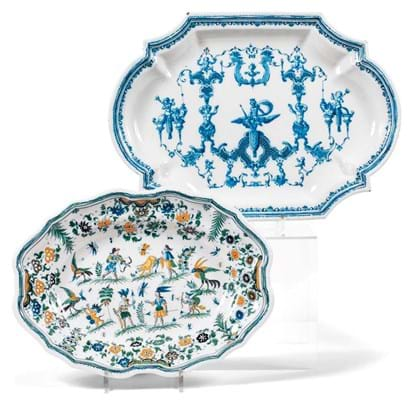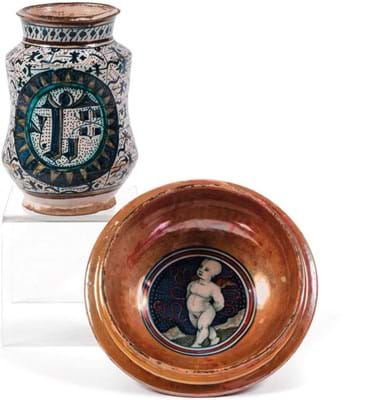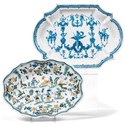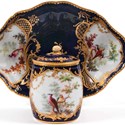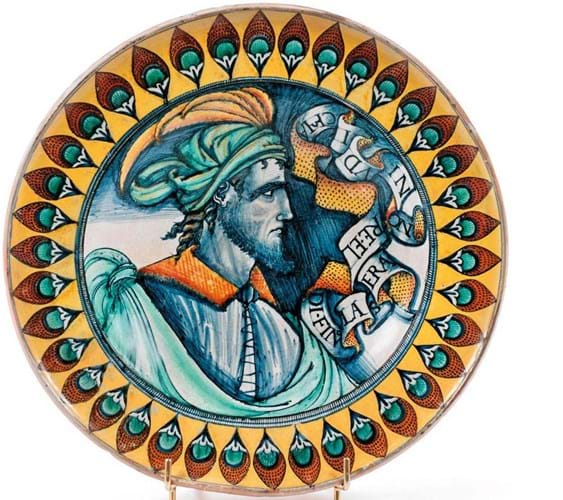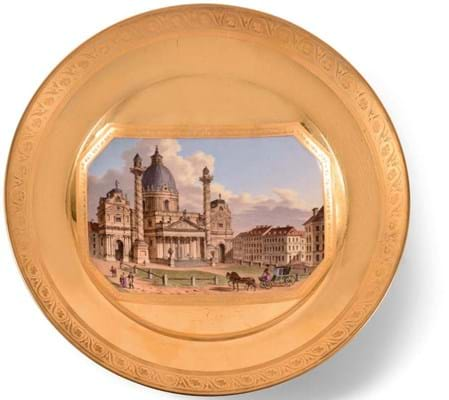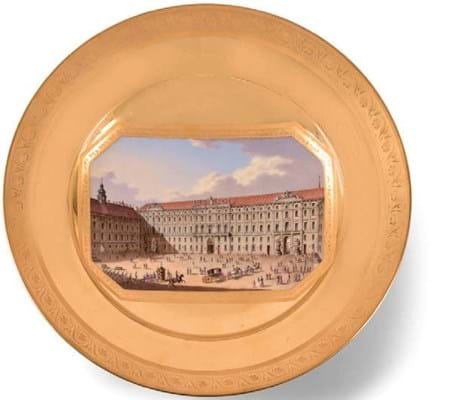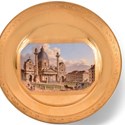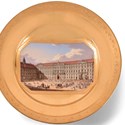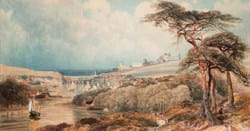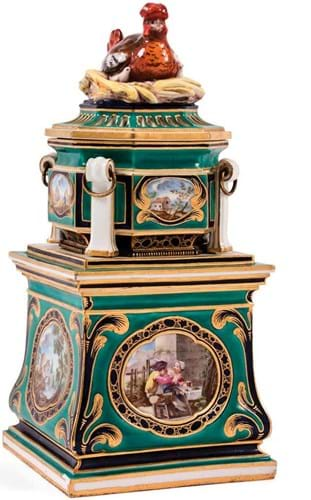
The Sèvres soft paste pastille burner or veilleuse from 1760 which led the items from the Nicolier family collection – €800,000 (£677,965) at Fraysse.
Father Jean and sons Pierre and Philippe specialised particularly in ceramics.
On July 6 the auction firm Fraysse (27% buyer’s premium inc tax) held a sale at the Drouot sale centre in Paris that was largely given over to pieces from the Nicoliers that had been kept by the family.
This was an eclectic mix featuring modern paintings and sculpture, Madame Nicolier’s jewellery, furniture and objects.
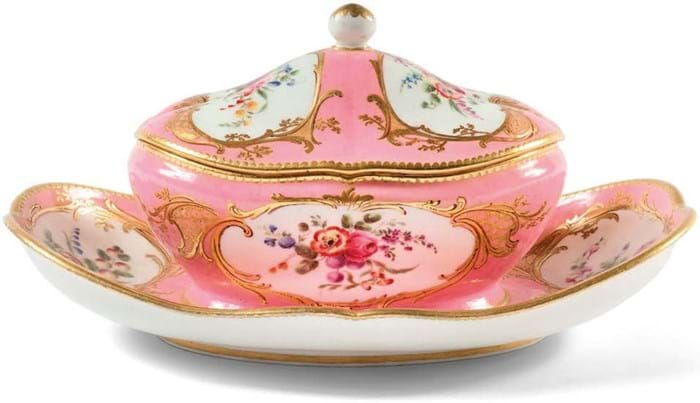
A 9in (23cm) wide Sèvres covered sucrier with fixed stand decorated with cartouches of floral bouquets and fruits on a pink ground. Marked with interlaced LLs and the date letter for 1758, this was probably part of the service delivered to Lazare Duveau for the Duc de Richelieu between December 1758 and January 1759. It overshot a €6000-8000 estimate to sell for €40,000 (£33,900) at Fraysse.
However, at its core were around 100 lots of the ceramics for which the antique dealers were best known: a mix of porcelain from Sèvres and other French factories (Vincennes; Saint Cloud; Paris); Renaissance Italian maiolica, French faience and a group of Middle Eastern pieces.
Prices were equally wide ranging, spanning some key Sèvres rarities and examples of Renaissance Italian maiolica making five- and six- figure prices to more standard porcelain and faience products from various French factories selling for under €1000.
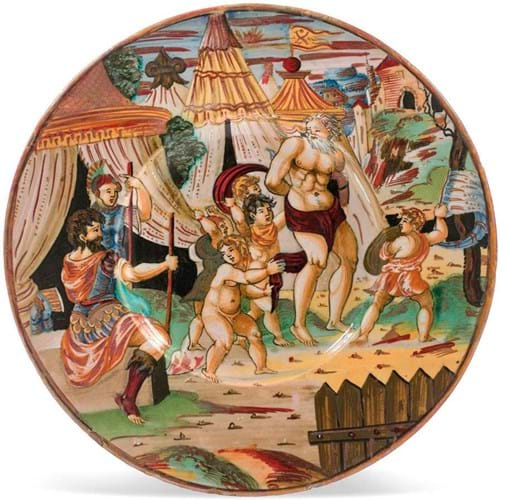
An 11in (27.5cm) diameter Urbino istoriato plate decorated with a classical scene from the story of Camillus delivering the schoolmaster of Falerii to his pupils. The painting is attributed to Xanto Avelli and the lustre decoration to Maestro Giorgio, with an inscription and date to the reverse reading Rende Camilla de falischi i figle 1539. It sold for €34,000 (£28,815) at Fraysse.
Purpose unknown
The top lot of the sale by a wide margin was a rare Sèvres soft paste veilleuse or pastille burner (pictured top).
Standing 9in (23cm) high overall, this is constructed in three parts with a square section baluster-shaped lower part and an octagonal central portion with a later hard paste replacement openwork cover, surmounted by a hen seated on a nest of chicks.
The decoration on a green ground comprises Teniers-style landscape champêtre panels with added gilt and blue caillouté elements. It bears factory marks with a date letter for the year 1760 and marks for the painter Jean-Louis Morin (active 1754-87).
The exact purpose of this piece is as yet undetermined. The openwork elements suggest a pastille burner but a silver-gilt cylinder and pierced plaque inside the middle section means it may have served to as a food warmer perhaps to heat liquids or for eggs, a possibility also suggested by the hen cover.
Either way it proved much in demand with bidding leaving a not insubstantial €80,000-120,000 estimate far behind as the hammer finally came down at €800,000 (£677,965).
Commissioned by Napoleon
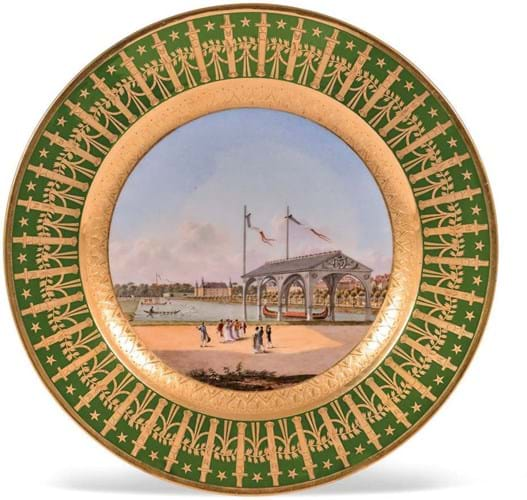
An Empire period plate from the Service particulier de l’Empereur commissioned by Napoleon in 1807 which took €200,000 (£169,490) at Fraysse.
Sèvres from the later Empire period provided another of the top lots: a plate from the so-called Service des quartiers généraux or Service particulier de l’Empereur, commissioned from the factory by Napoleon in 1807 and delivered on March 27, 1810, on the occasion of his marriage to Marie-Louise.
The service featured 70 plates finely painted with different scenes including the emperor’s victories, many of them chosen by Napoleon himself.
In this particular instance the scene shown was the lake at Rambouillet with boats in the foreground and the château in the background.
The 10in (24.5cm) plate, with an interlaced LL Restauration period mark and the number 3 to the reverse, also carried an €80,000-120,000 estimate. In this instance the hammer fell at €200,000 (£169,490).
A second plate from the same service painted with a scene of the removal of the famous statues of horses from St Mark’s in Venice was secured by the Château de Fontainebleau for an undisclosed price.
Six-figure portrait plate
The most expensive example of the Nicoliers’ Italian maiolica was the early 16th century Deruta portrait plate previewed in ATG No 2547 and pictured again here.
The 19in (48cm) diameter plate, dated to c.1510, is painted with a man in profile and an inscription on a banner and was published in Chompret’s survey Répertoire de la majolique Italienne of 1948.
Despite being broken and restored, it nonetheless surpassed its €15,000- 20,000 guide to take €120,000 (£101,695).
Keen competition was also generated for some of the Nicoliers’ French faience, notably a large 15in (38.5cm) pilgrim flask from Nevers dated to c.1680 moulded with ram’s head handles and painted in polychrome with hunting scenes after Antonio Tempesta which was pursued to €42,000 (£35,595).
Picabia Surrealism
Ceramics apart, the sale also produced a substantial price for one of the paintings collected by Jean Nicolier when an oil on canvas by the Surrealist Francis Picabia (1879-1953) realised €260,000 (£220,340).
The 3ft 3in x 2ft 8in (1m x 81cm) work, Le Philosophe, which is titled lower left and signed and dated 1946 lower right, had a provenance to a sale in Paris at Galliéra in June 1964 and will feature in the catalogue raisonné on Picabia currently under preparation.
£1 = €1.18


